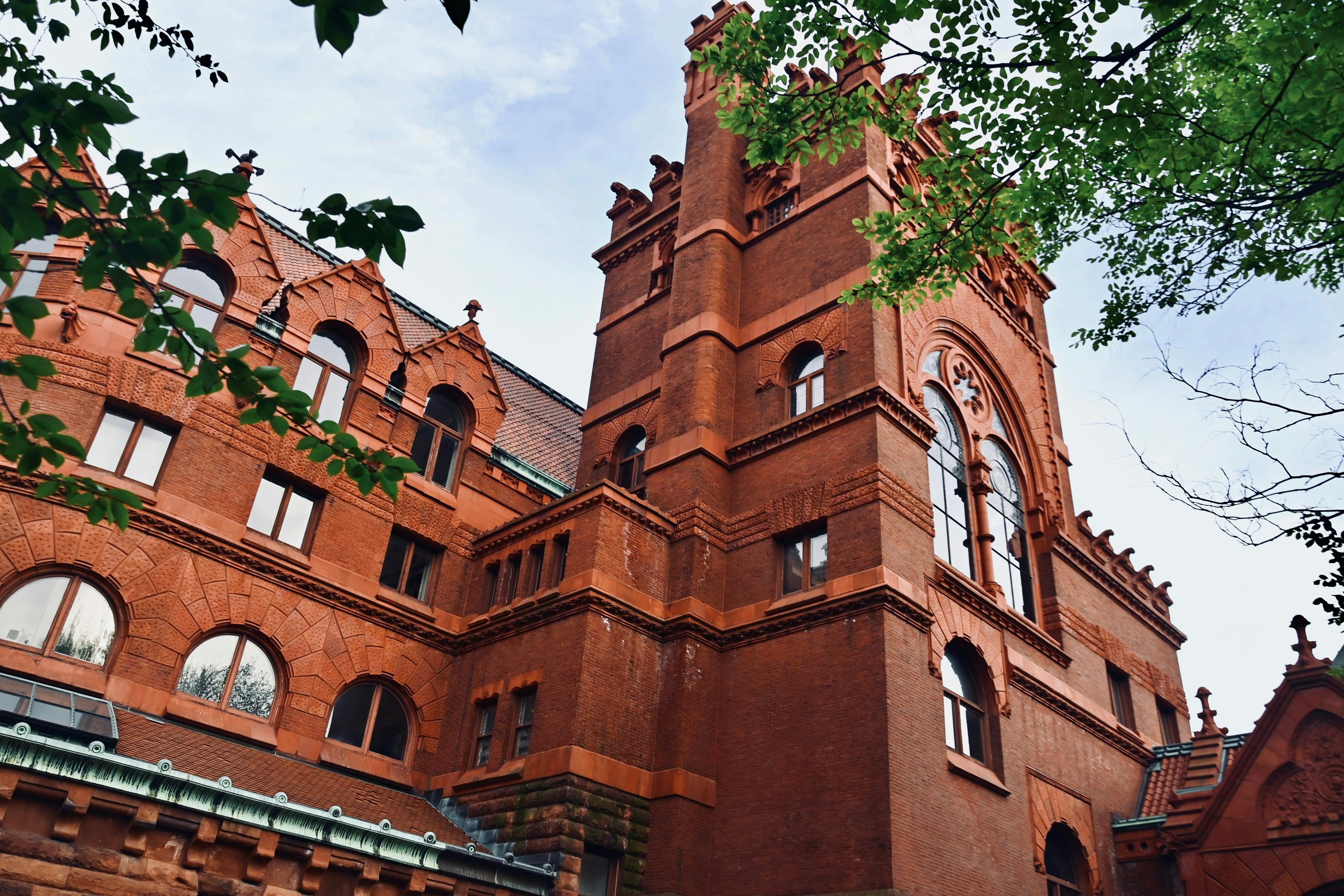
Fisher Fine Arts Library is located at 220 S 34th St.
Every day, students study and enjoy the historical mystique of the Fisher Fine Arts Library, the oldest library on Penn's campus. However, many students might not ever travel beyond the eye-catching Reading Room. This photo essay shows all of the many resources Fisher Fine Arts has to offer that may have been hidden before.
For many, it is easy to forget the historical importance of the building when it is used daily by so many students and faculty. Built in the late 1890s by Frank Furness, the library features architecture that is completely novel for its time. Today, the building is on the National Register of Historic Places and is a National Historic Landmark.
Hannah Bennett is the director of Fisher Fine Arts, along with the Penn Museum and Ormandy Music libraries. She gave The Daily Pennsylvanian a tour of the library. Here is what we found.
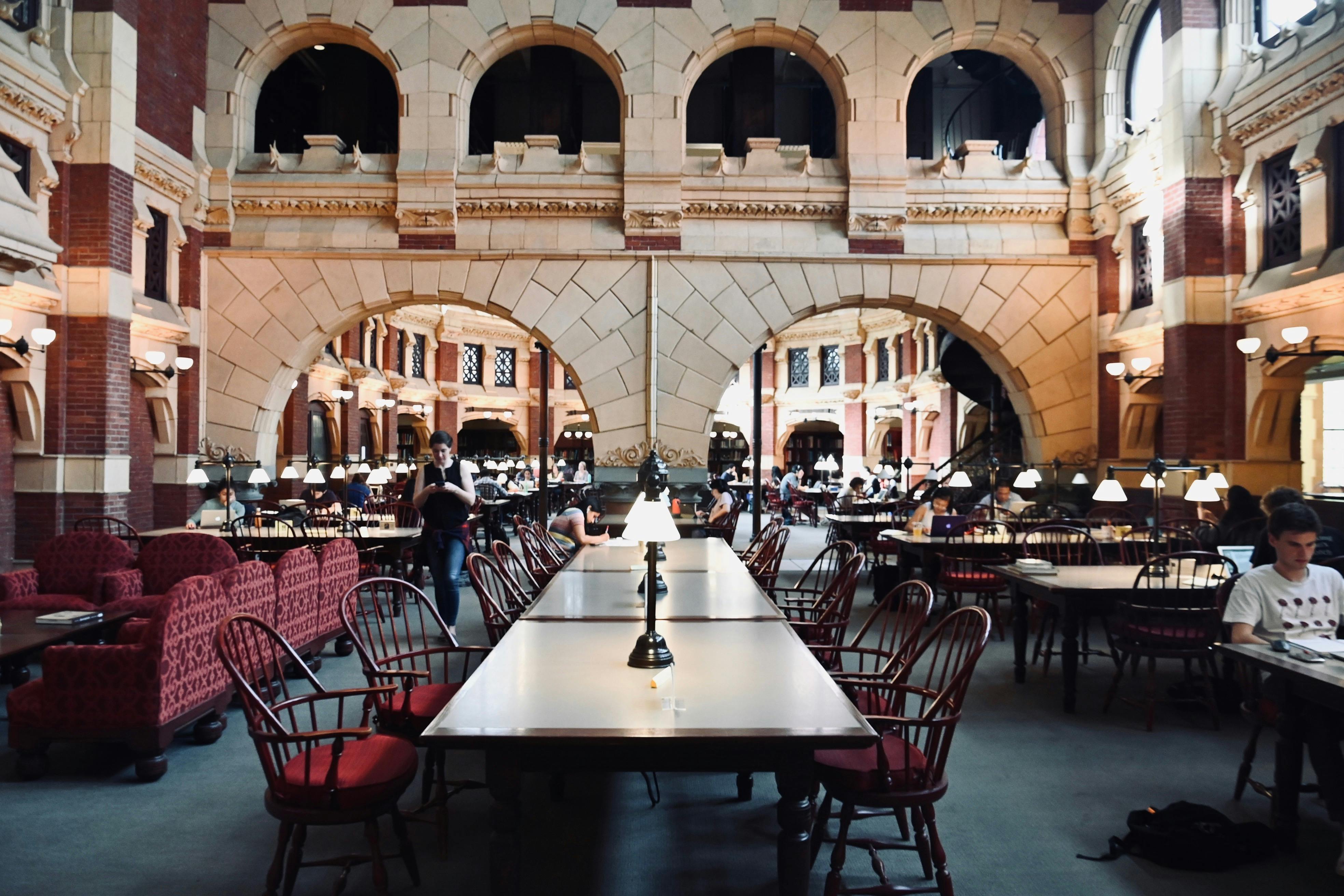
Directly across from the building's main entrance is the Reading Room. The room is four stories and made from brick and terracotta. The Reading Room is open to students every day, but no food or drinks are allowed.
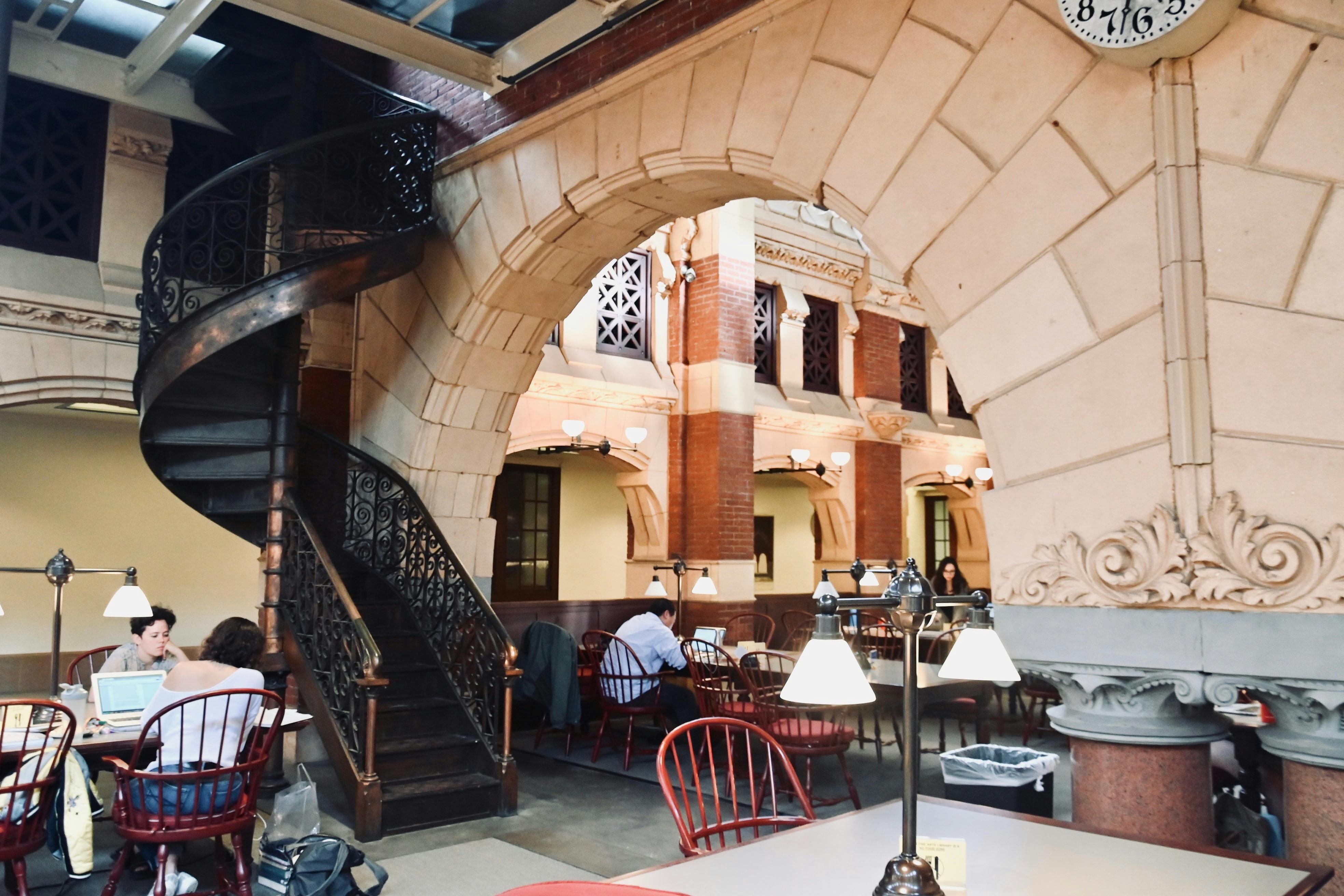
This staircase leads to the carrels above the Reading Room.
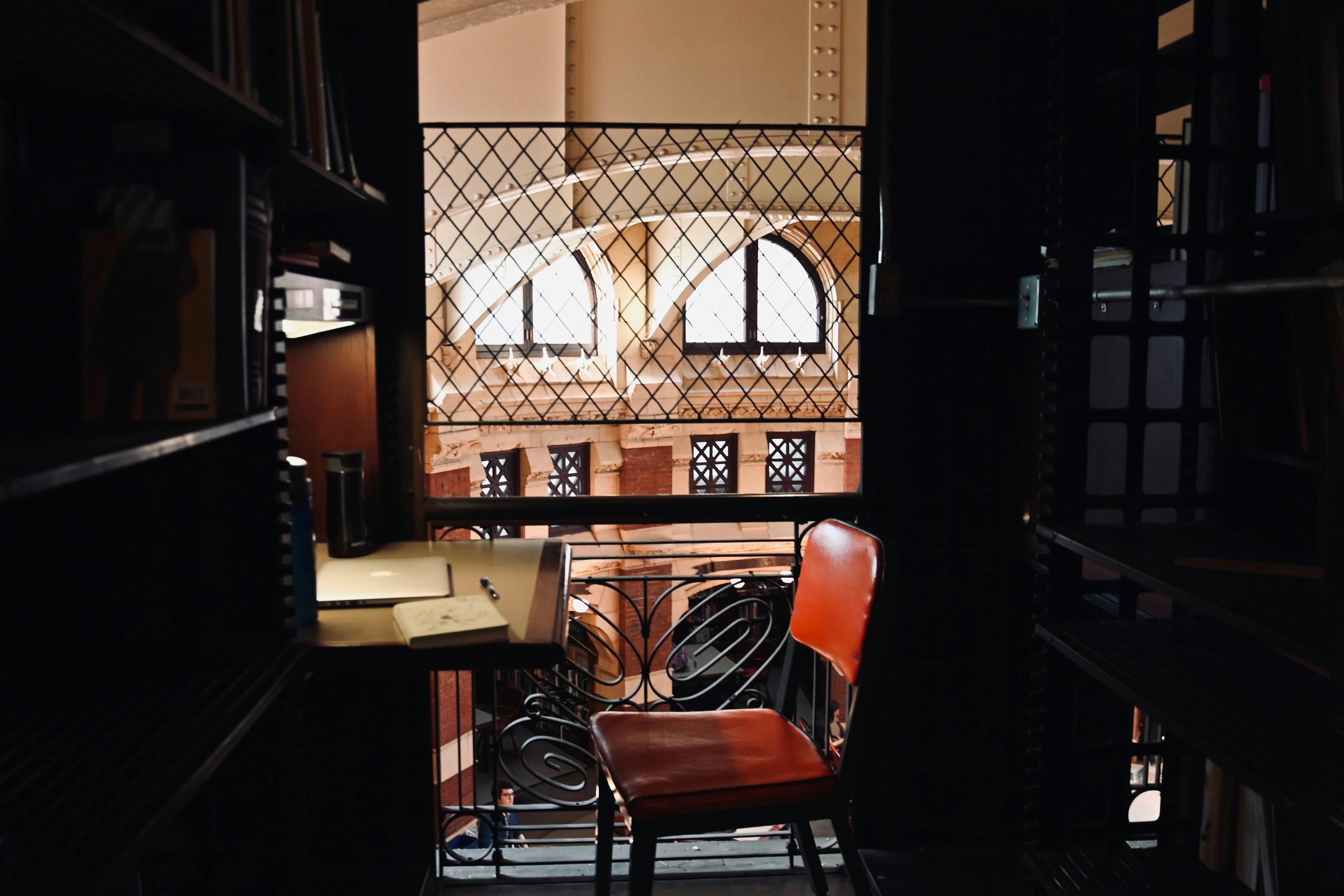
Above the staircase are carrels. Graduate students, with priority given to Weitzman School of Design and History of Art Ph.D. candidates, can reserve the carrels and use any of the books, which must stay in the library. These carrels are open to all students when graduate students are not using them.
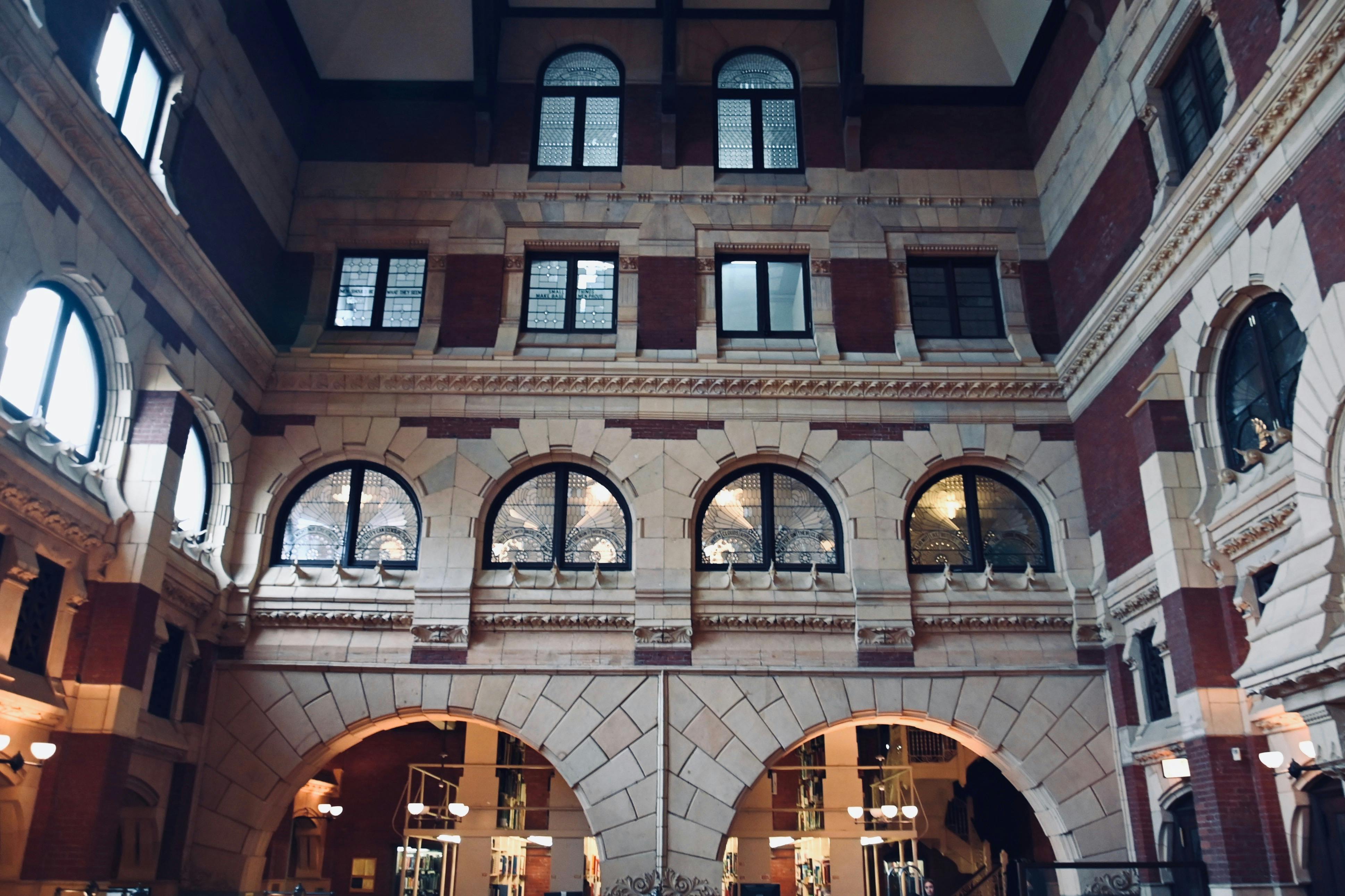
Across from the second floor carrels above the Reading Room are glass windows that fill the room with light. Frank Furness’s older brother was a Shakespearean scholar and member of Penn’s faculty during the late 1800s when the building was being constructed. These windows facing the reading room feature quotes from Shakespearean literature chosen by Furness’ brother.
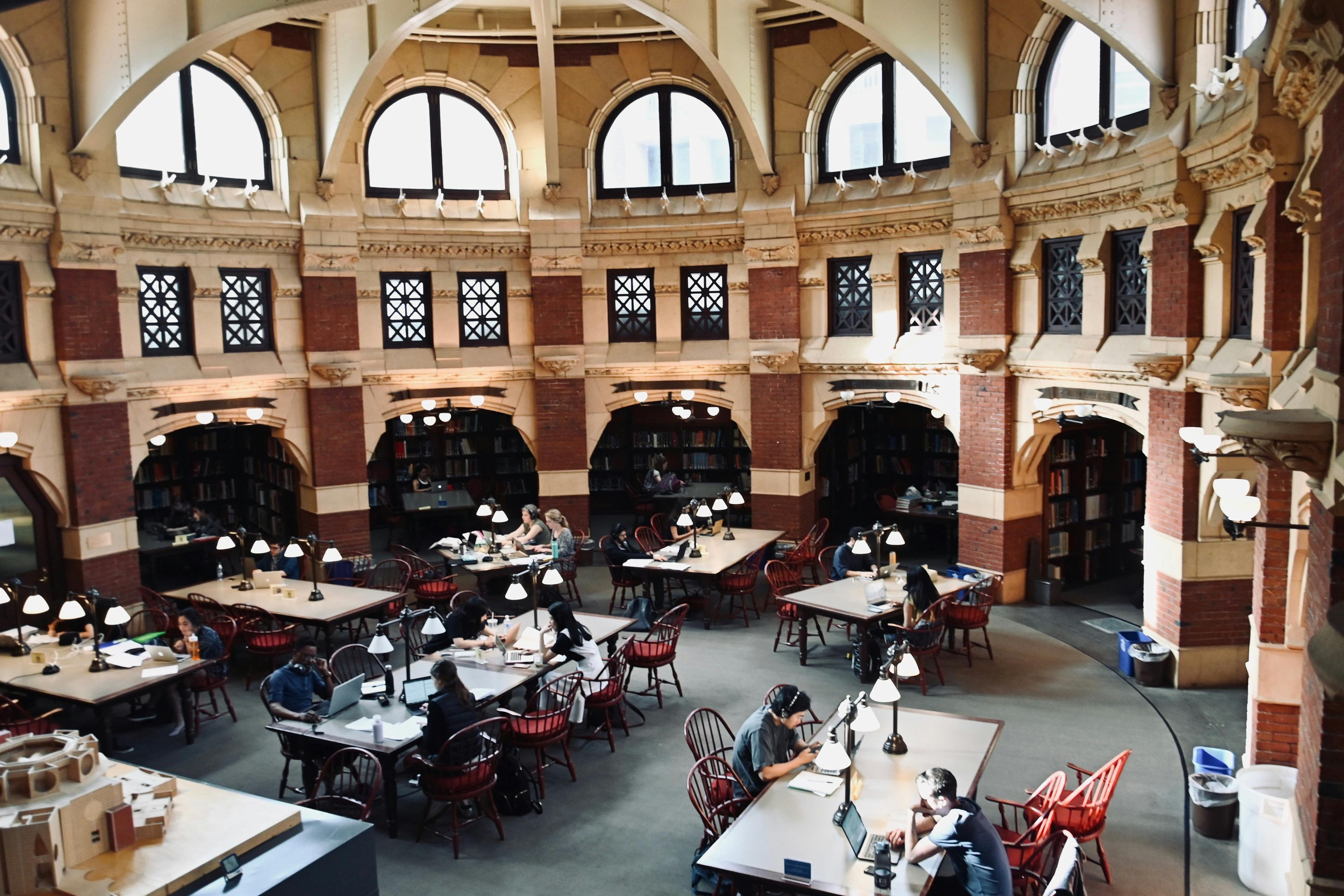
Some of the library’s collections are housed in the Reading Room, but most are housed on the four floors accessible from behind the circulation desk.
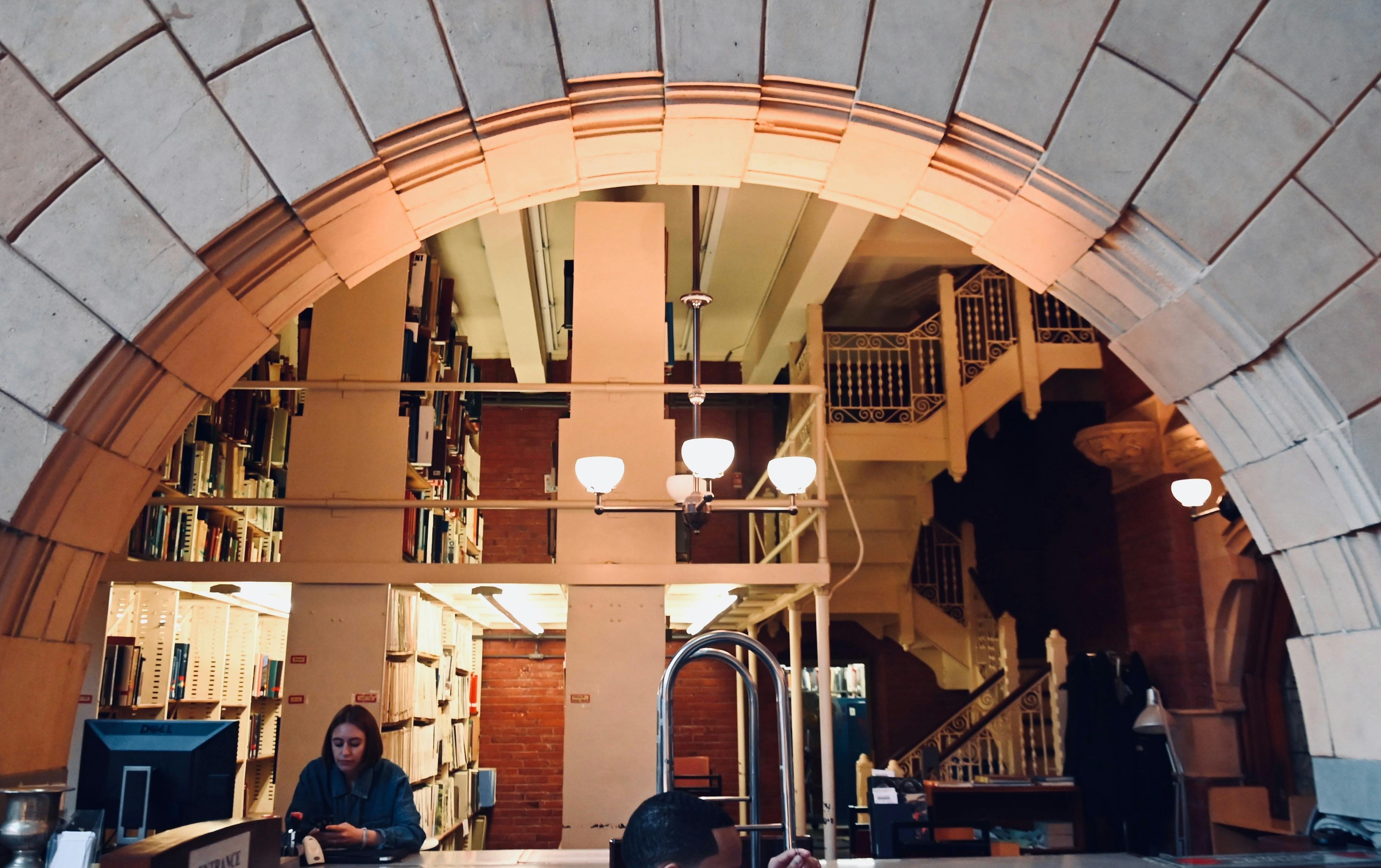
Furness designed the circulation desk with low arches to mimic Roman aqueducts.
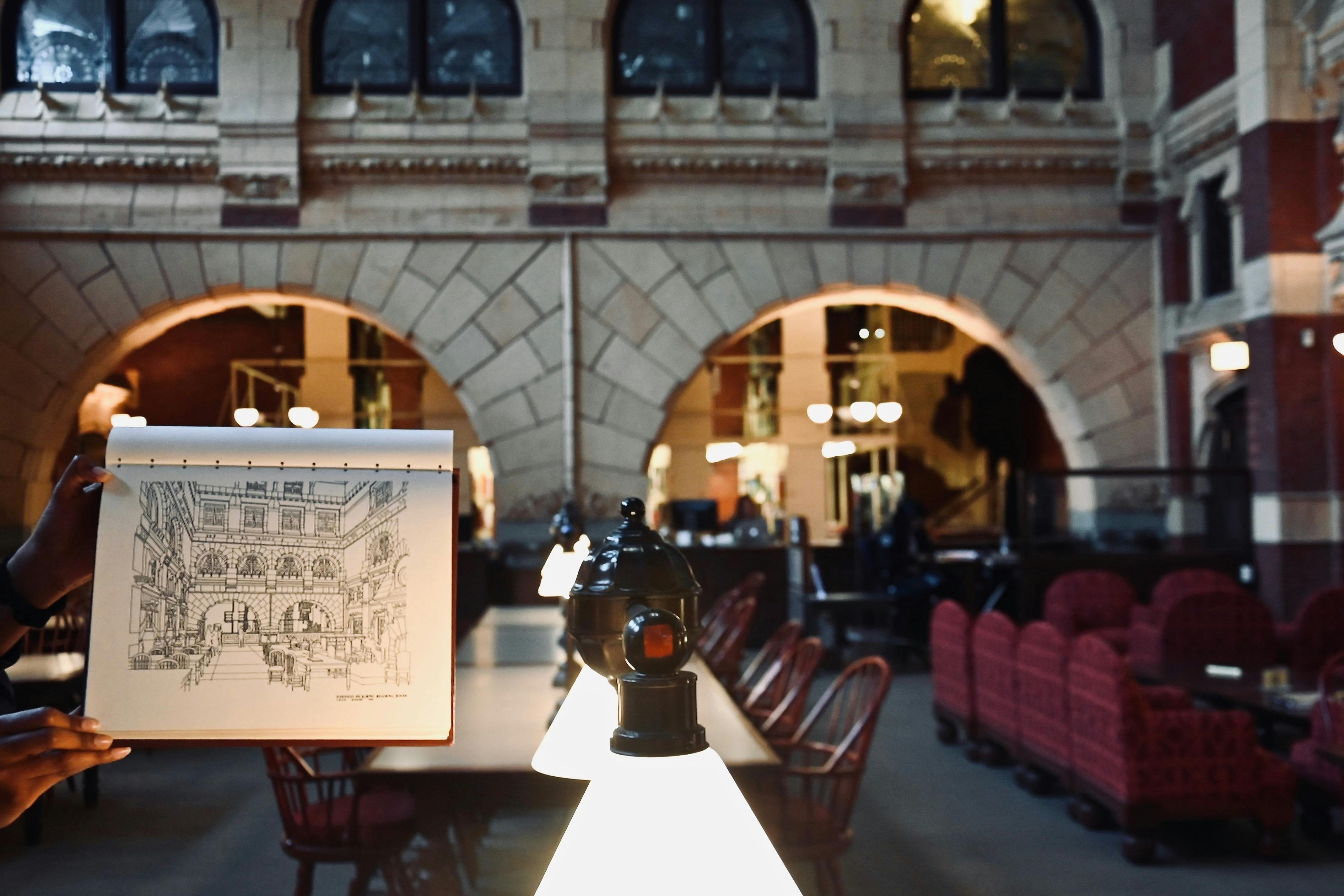
An architectural drawing from a book in Fisher Fine Arts shows the layout of the Reading Room.
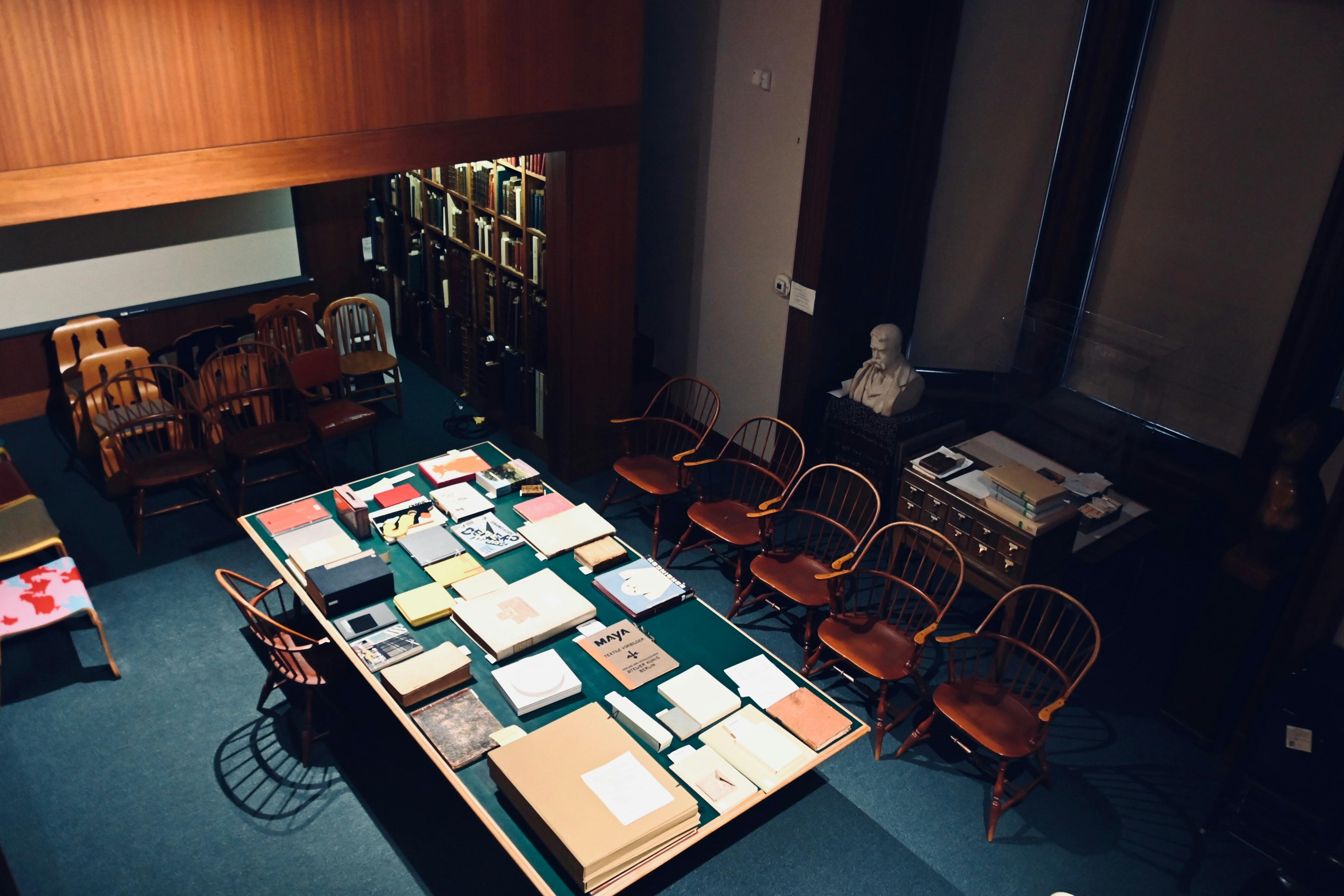
Next to the circulation desk, and across from the main entrance, is the Perkins Rare Books Library. It is not open to the public every day, but some faculty reserve the room to give their classes access to the unique collections. Students can also ask to reserve the room and look through the collections.
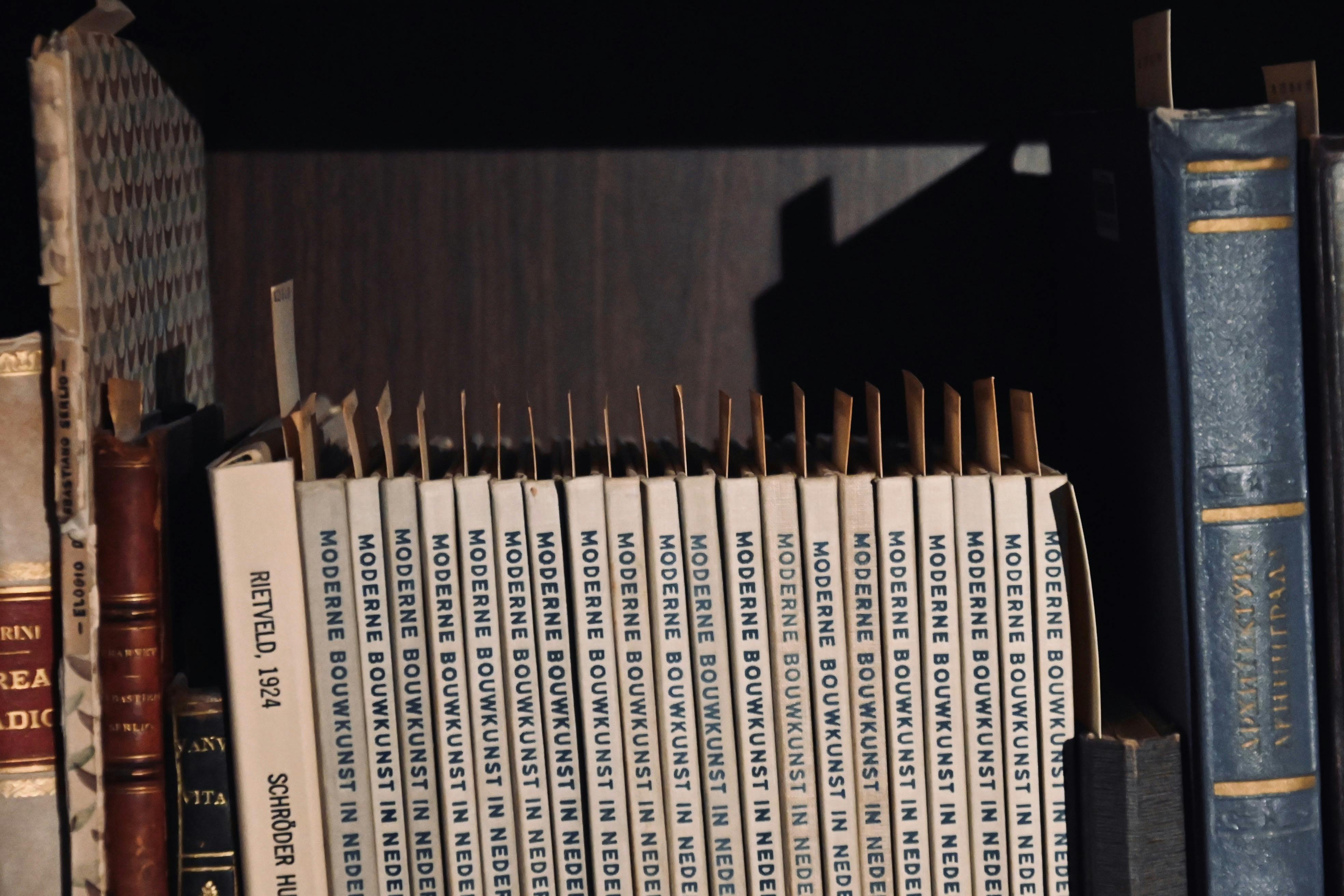
The Rare Books Library currently holds about 3,000 rare books, drawings, and historical maps. The majority of the books are on monuments and architecture.
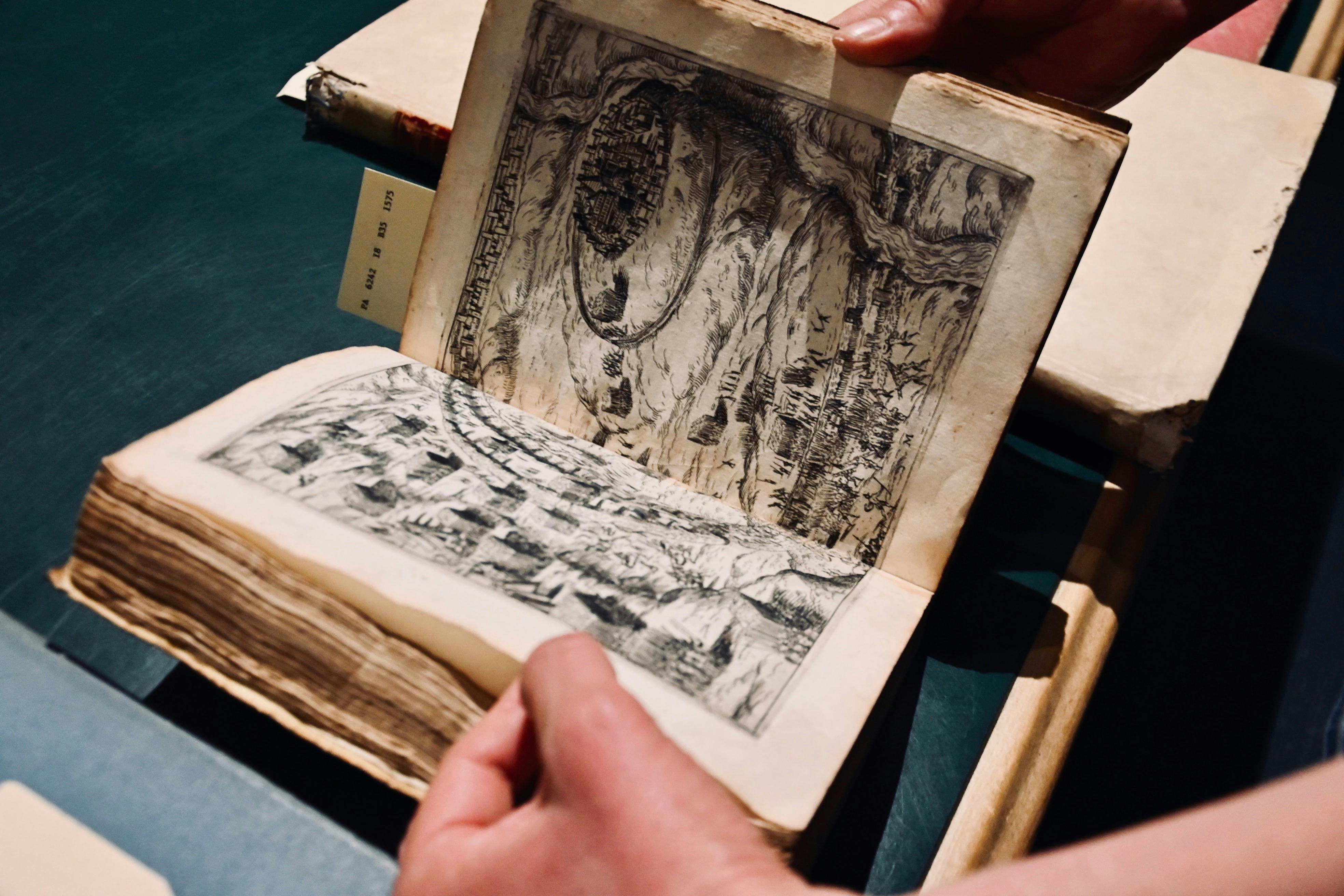
One of the oldest books in Fisher Fine Arts Library, this Roman novel was published in 1511 CE.
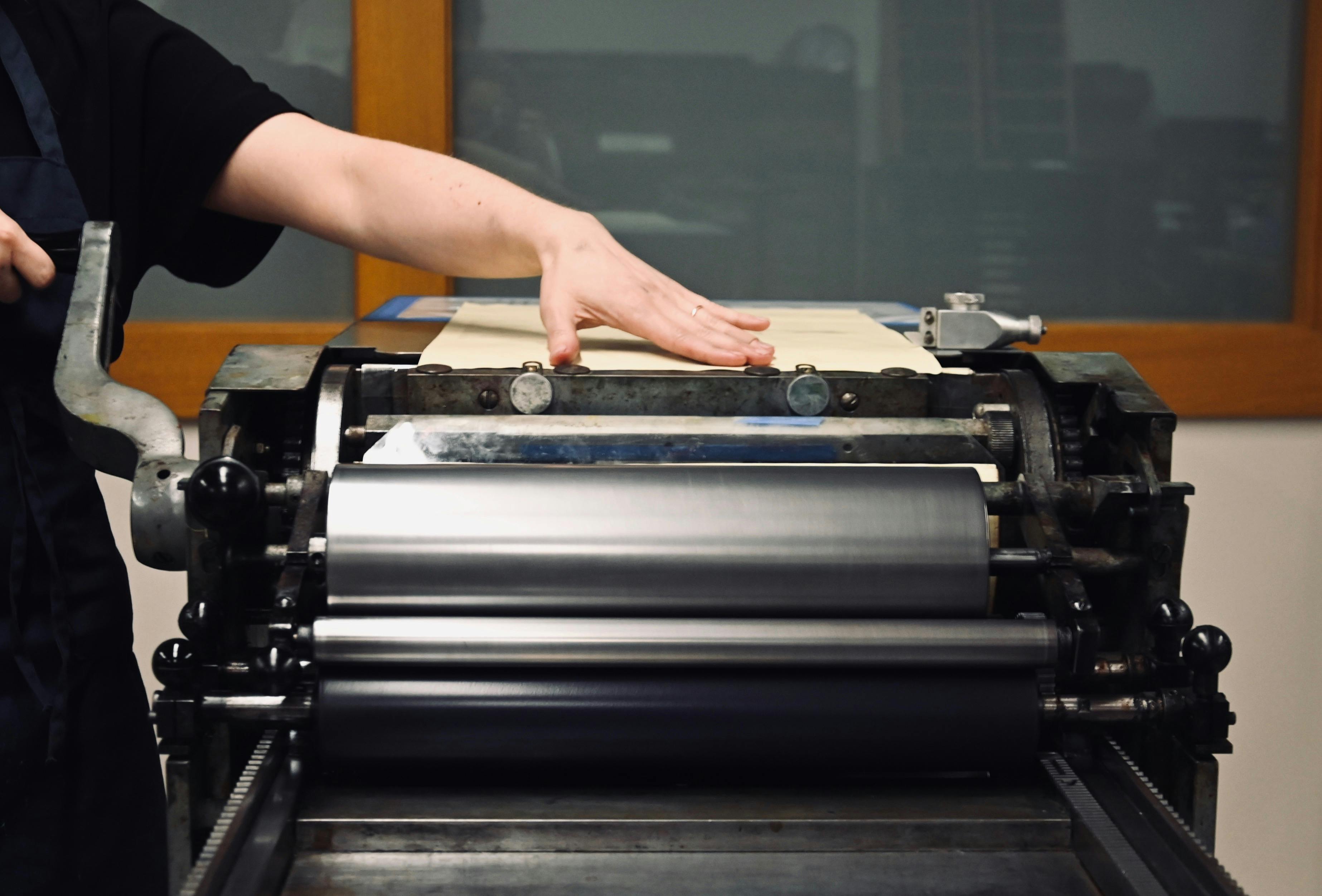
The Common Press letterpress printing studio, managed by Mary Tasillo, can be accessed from behind the circulation desk on the ground floor of the library. Any student can use it once completing an Introduction to Letterpress workshop where they learn how to use the equipment properly. Students can then return during scheduled and monitored studio hours to use the equipment.
Common Press also hosts events. Most recently, they hosted a Mother’s and Father’s Day card event where students could use the equipment in the studio to make cards for their loved ones. Pictured above is an inking roller that places ink on the card by rolling the paper through the machine.
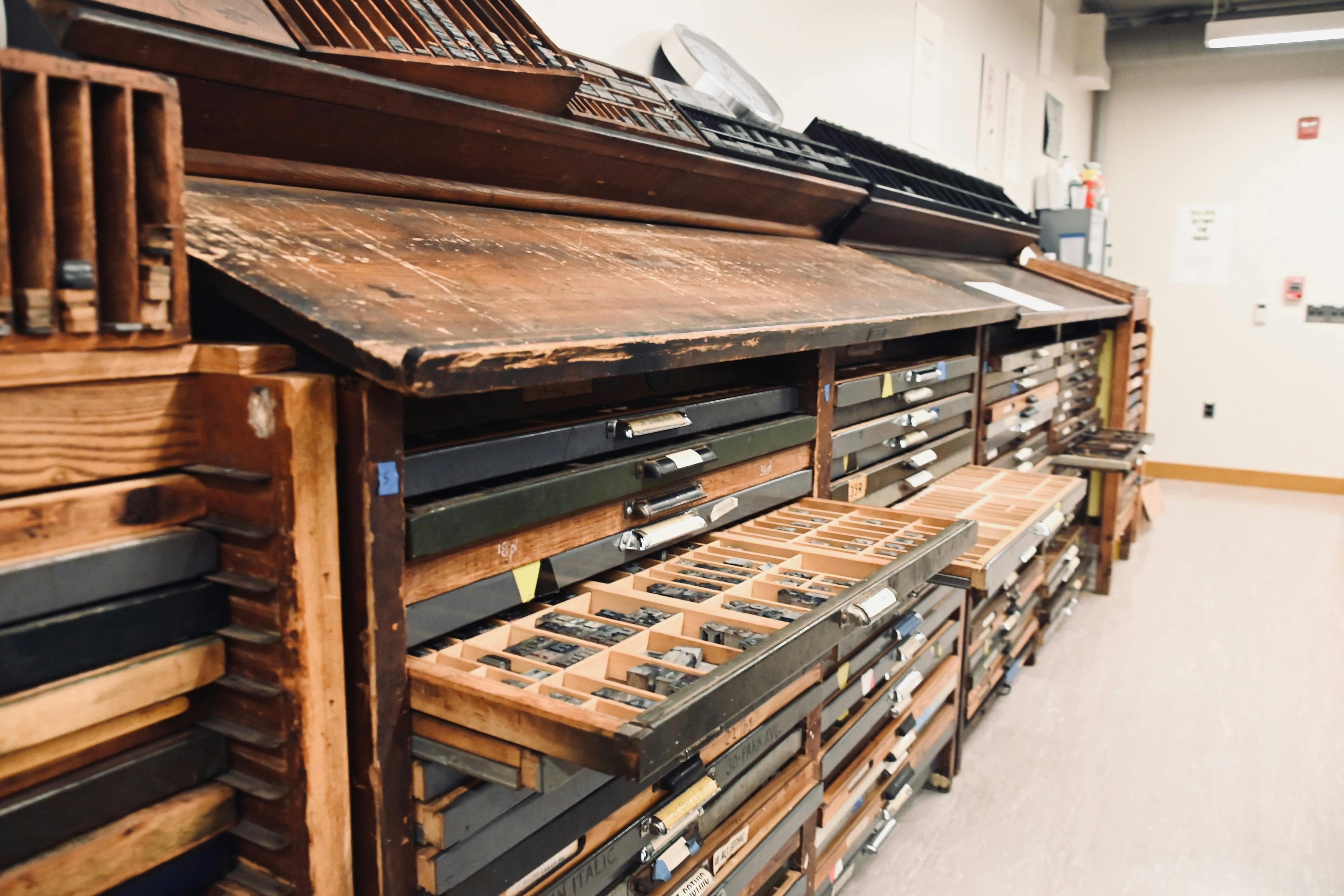
Common Press has wood and metal type (raised engravings in the shape of letters, numbers, and symbols) available for students. It even has the original Times Roman, as Times New Roman only arose when digital printing was invented. Tasillo said that letterpress printing inks do not fade as quickly as digital printing, and old printing papers hold up longer over time because they were made of rags, not trees.
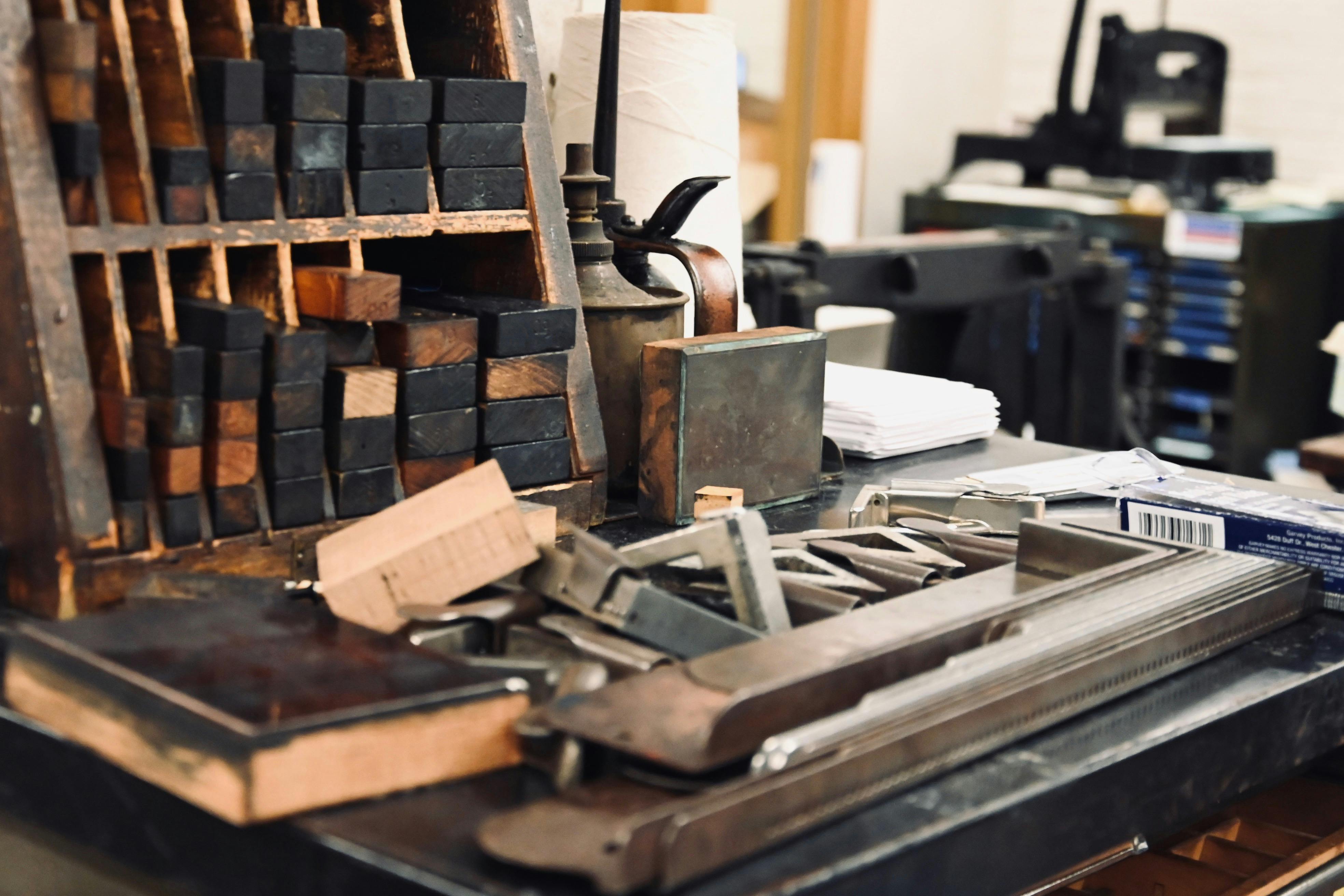
Tasillo said printing is a “very physical way to get letters on the page.”

Directly next to Common Press on the ground floor of Fisher Fine Arts, the Materials Library houses many unique materials available to all Penn students. Some samples include Vanta Black (a black that absorbs 99.96% of all light), powdered aerogel (a gel used in space with all of the moisture evaporated out of it), and Tyrian purple (one of the oldest dyes in the world). The Tyrian purple is extracted from Murex snails.
Elizabeth Beck, Materials Library Specialist, said that in Ancient Rome it would have taken 250,000 Murex snails to dye one toga purple. This is why only emperors had the privilege and why today purple is known as the color of royalty.
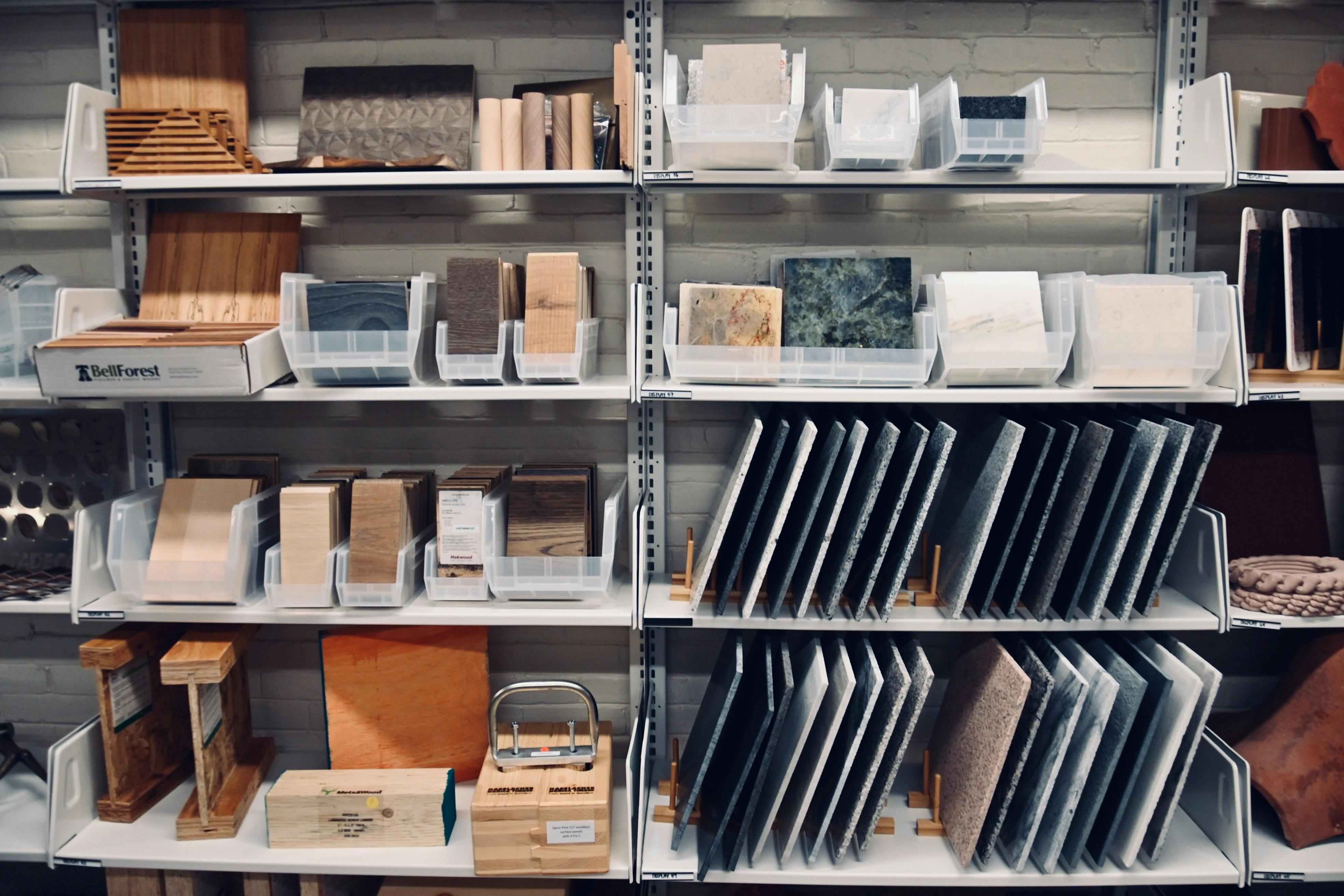
Many students from Penn’s campus use the Materials Library. Wharton MBA students come to look at samples for biodegradable packaging for their start-ups. The Materials Library has potato skin plastic, and wood and bio resin packaging, among other biodegradable options. Other students have used materials from the library to build speakers for an acoustic project. Additionally, architecture students visit to test out different woods and metals for building projects and use the in-house 3D printer. All of the samples housed in the Materials Library are accessible and can be ordered from their online database.

Directly above the Common Press and Materials Library, behind the circulation desk, are additional library stacks that are isolated from the reading room. This is because the architect, Furness, did not want the sound of footsteps to disturb people working.
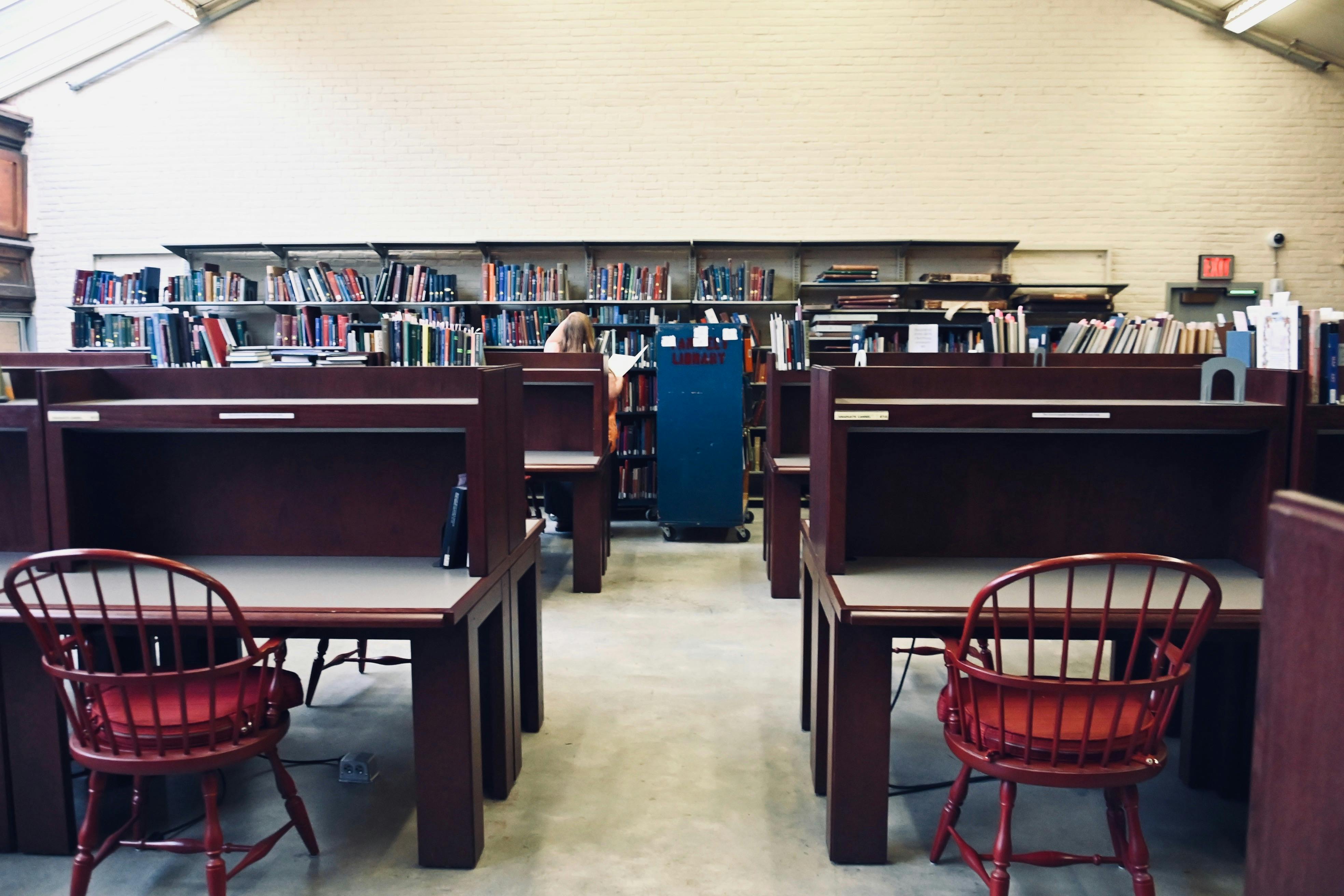
Furness originally designed the hidden library stacks with glass floors to bring plenty of natural light into the library. They were removed in the 1980s renovation to adhere to the building's fire code. Furness also rigged the walls with jackscrews so as collections expanded, the walls could too.
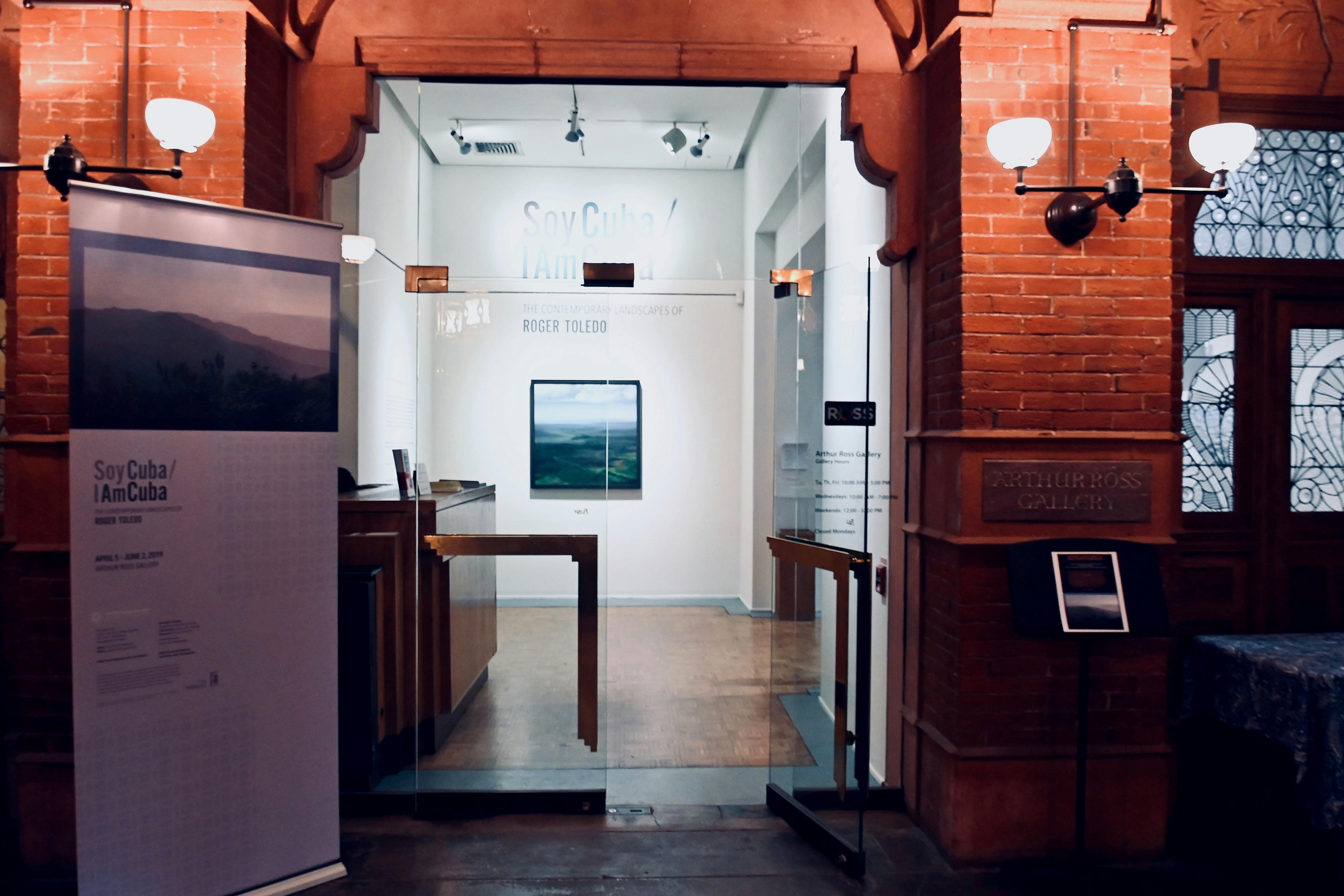
Outside the Reading Room, to the right of the main entrance, is the Arthur Ross Gallery. It was formerly the Furness Reading Room, but today it houses various art installations, and other student events. Currently, "Soy Cuba/I am Cuba" is on display. Access to the galleries is free to all Penn students.
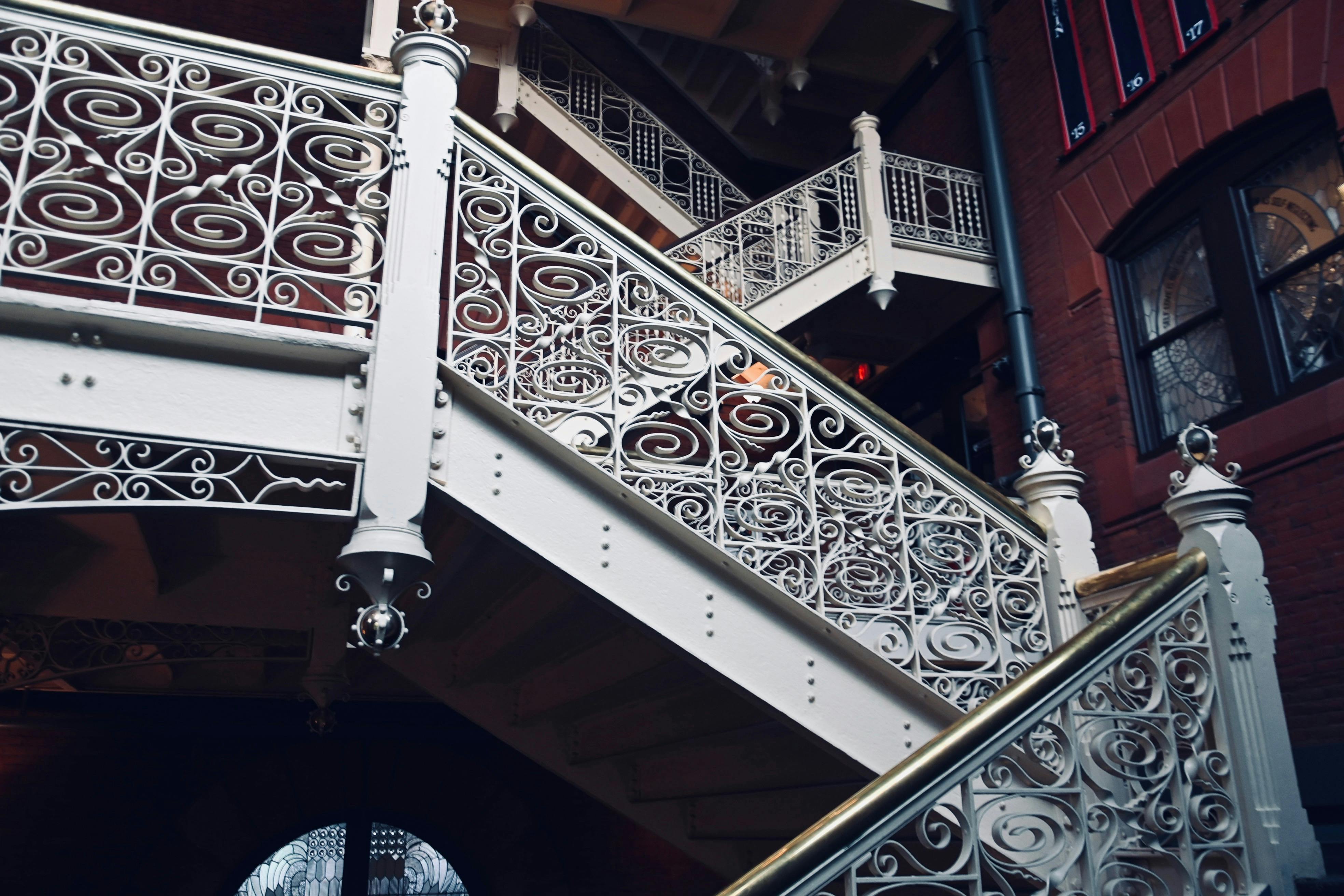
Leaving the gallery, these stairs across from Arthur Ross lead to the Kleinman Center for Energy Policy, which recently received a $30 million anonymous donation.
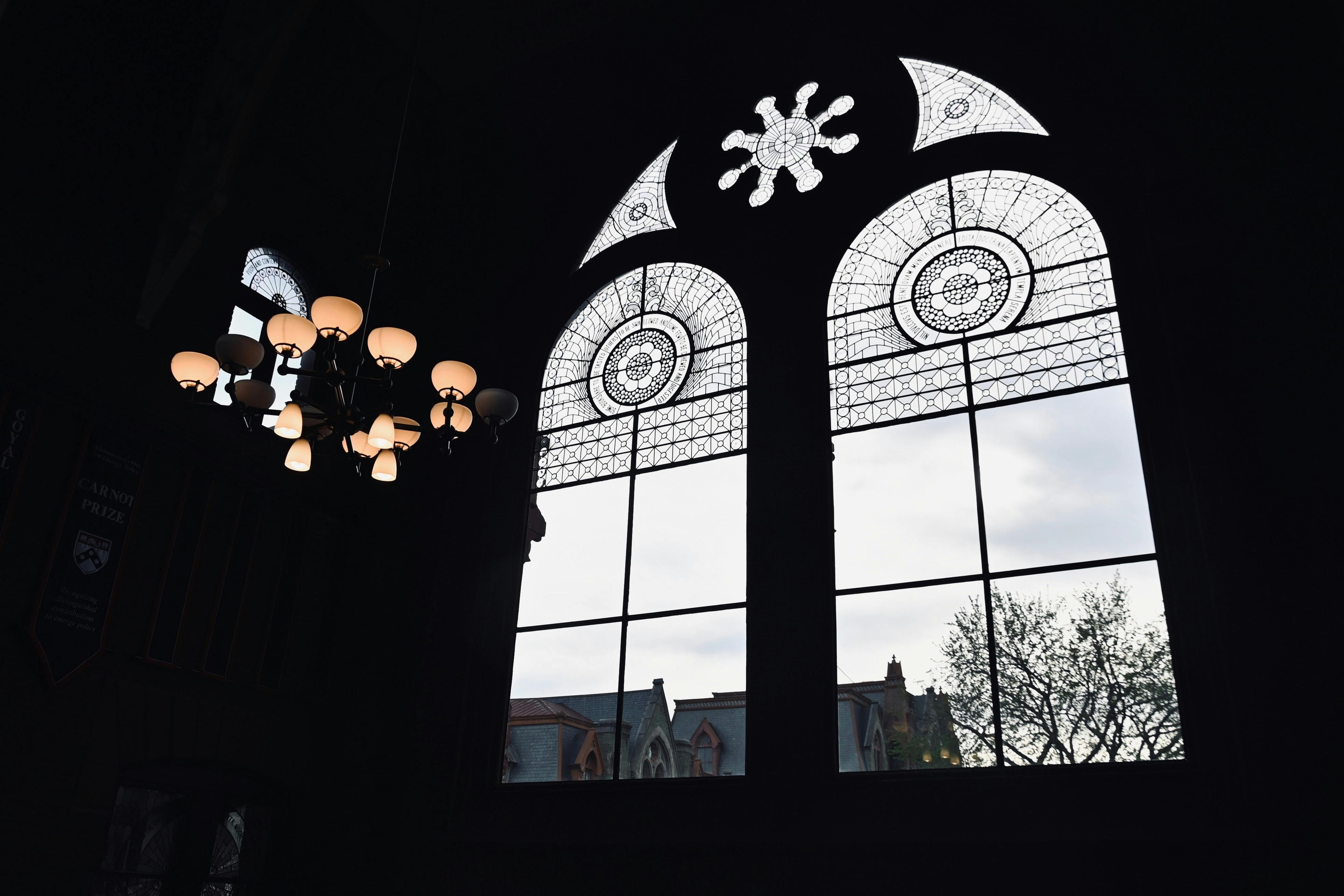
At the top of the stairs is this grand window facing College Hall. It sheds natural light onto the main entrance of the library that seeps into the Arthur Ross Gallery and the main Reading Room.
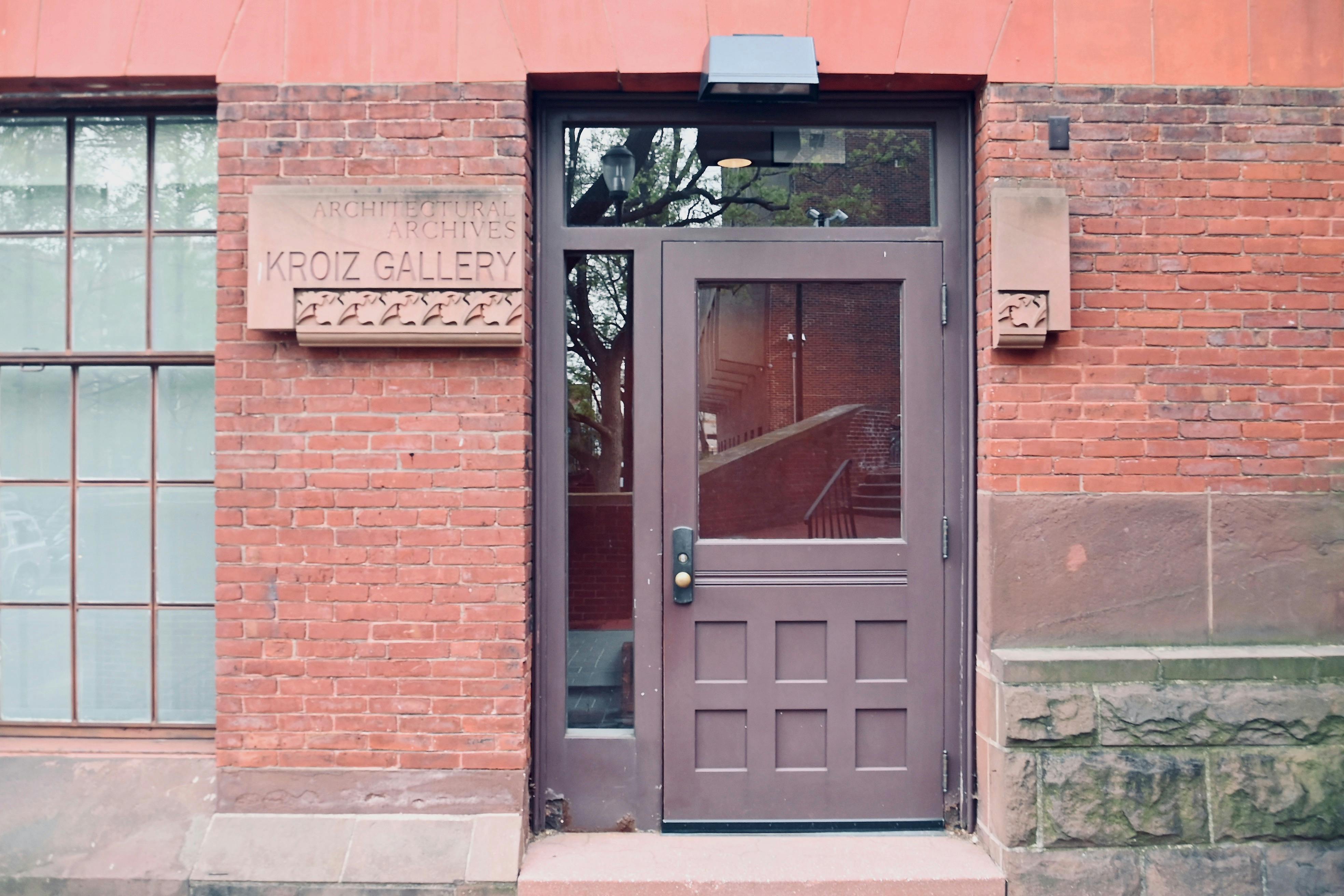
Outside of the library, facing the School of Engineering and Applied Science quad, is the entrance to the Architectural Archives/Kroiz Gallery. It houses more than 400 designs from the 18th century up to the present.
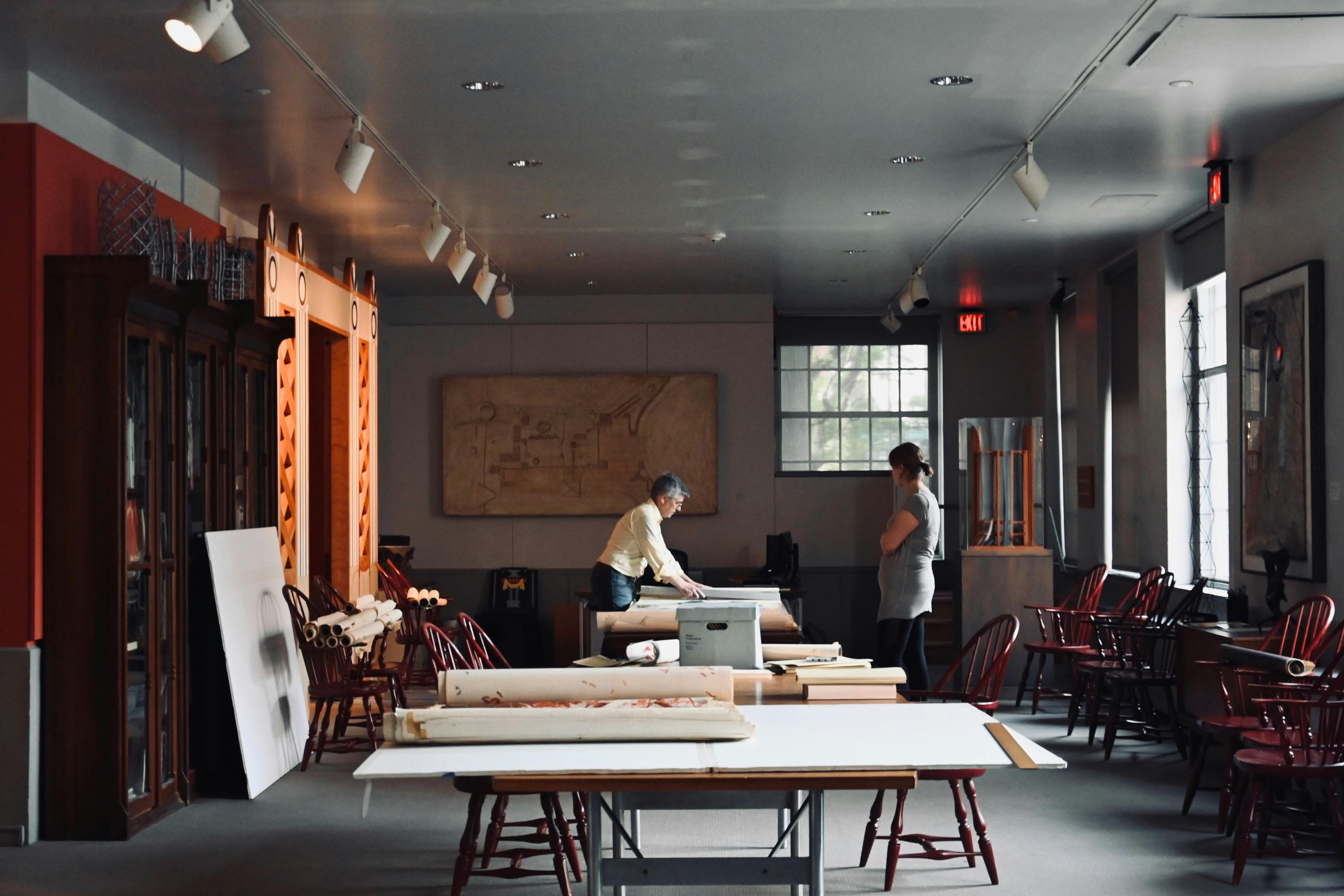
William Whitaker (left) is the curator and collections manager of the Architectural Archives.
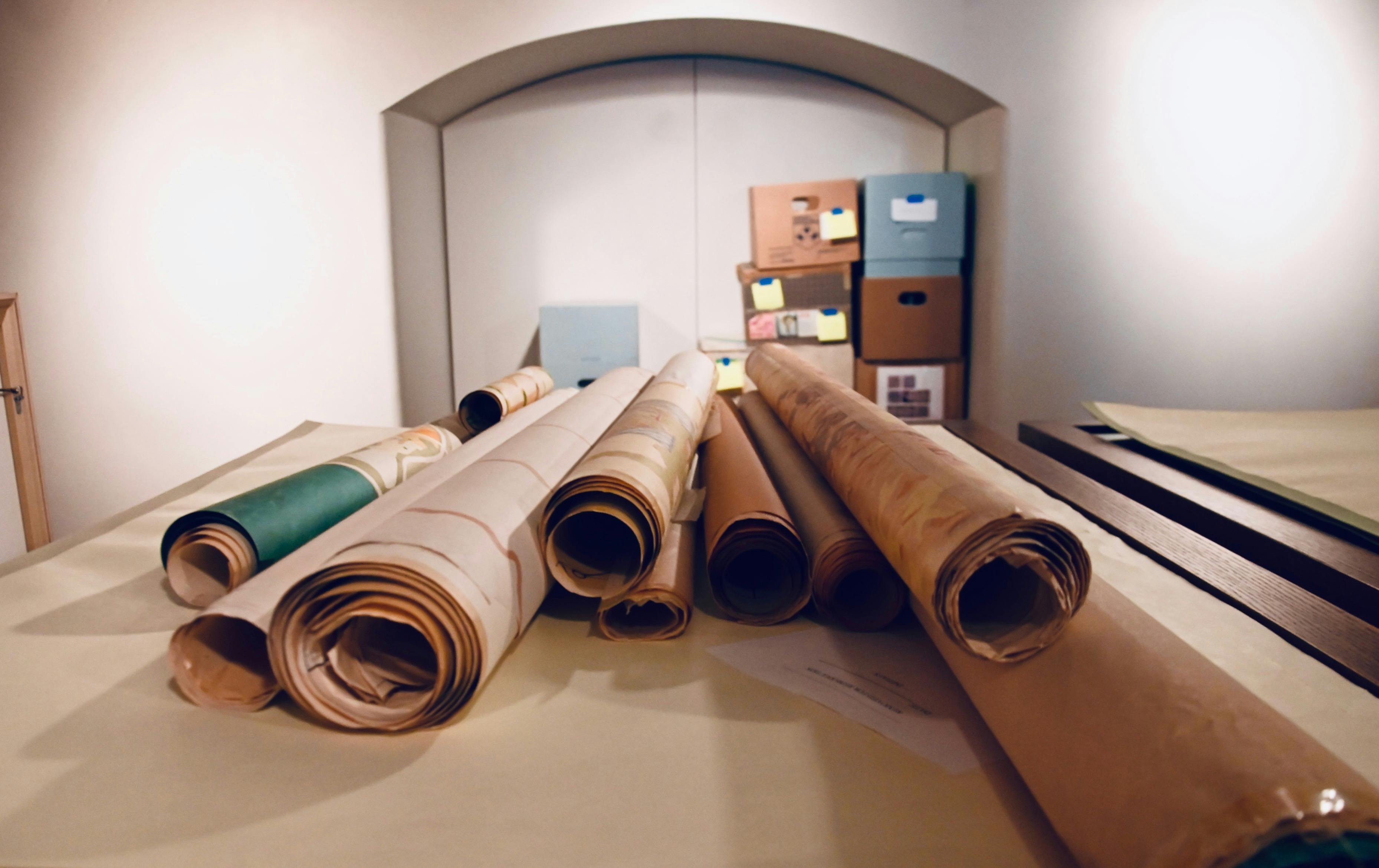
Students can be buzzed in at the entrance to view the gallery's collections.
This article was updated on May 8 for clarity.
The Daily Pennsylvanian is an independent, student-run newspaper. Please consider making a donation to support the coverage that shapes the University. Your generosity ensures a future of strong journalism at Penn.
Donate





Most Read
2013 Wharton graduate Charlie Javice convicted of fraud, conspiracy in JPMorgan case
‘At least three’ Penn students had visas revoked, ISSS says
Penn announces $5 million gift for inaugural professorship in philanthropy
More Like This